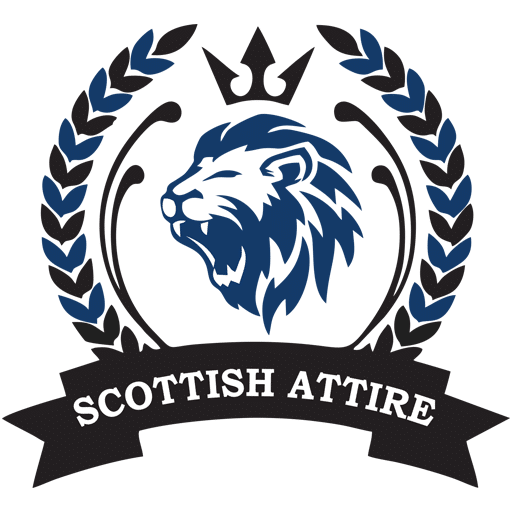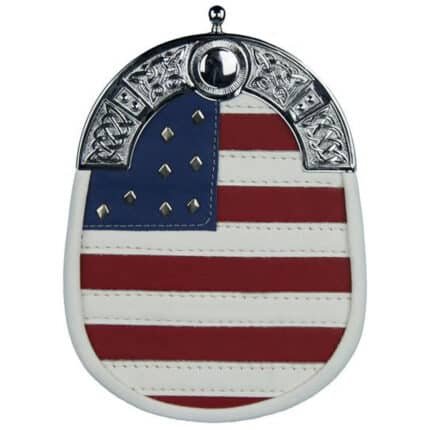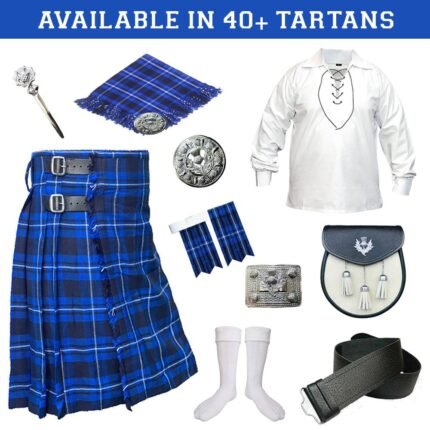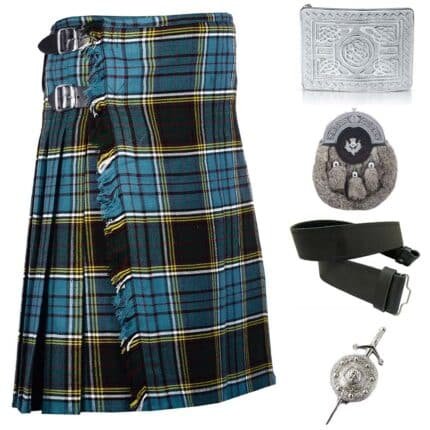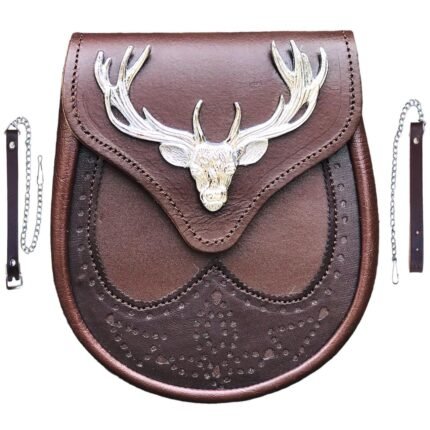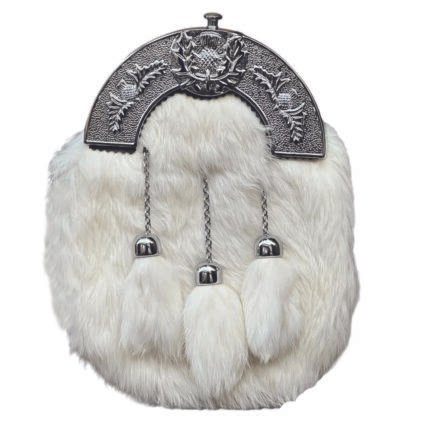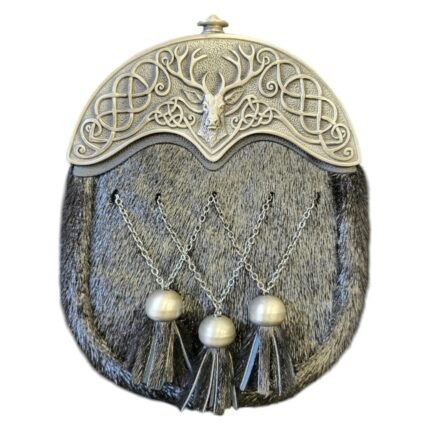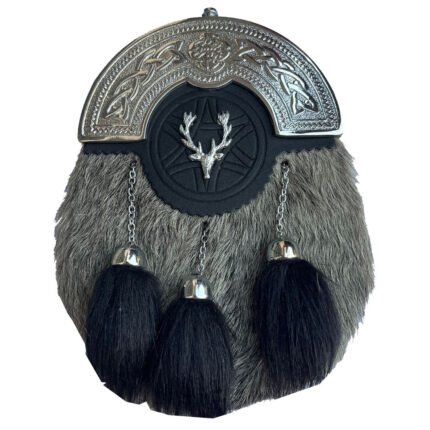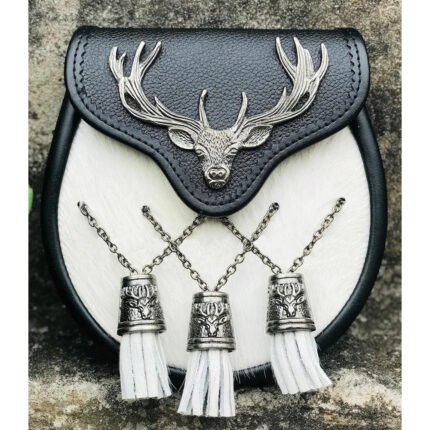Cultural Significance and Evolution of Sporrans in Scottish Highland Attire

Sporrans, those distinctive pouches adorning the front of traditional Scottish attire, stand as more than mere accessories; they embody a rich tapestry of cultural heritage and historical significance. Rooted deeply in Scotland’s traditional Highland dress, sporrans have played an integral role in both functional utility and symbolic representation. These ornamental pouches, suspended proudly from the waist, not only complete the ensemble but also serve as a testament to the wearer’s lineage and identity.
Importance and Cultural Significance
In the realm of Scottish attire, sporrans are not just fashion statements but intricate pieces that carry the weight of tradition. Stemming from a time when kilts lacked pockets, sporrans served as practical containers for essentials, blending functionality with style. Beyond the utilitarian aspect, however, sporrans are imbued with cultural symbolism. They denote not only the wearer’s affiliation with a particular clan but also the recognition of ceremonial occasions and the preservation of Scottish heritage.
As an integral part of formal dress, sporrans have become emblematic of pride, identity, and a nod to centuries-old customs. Their significance extends beyond the aesthetic, capturing the essence of Scotland’s cultural pride and reinforcing a connection to the past.
Historical Context of Sporrans
Origins of the Sporran
The sporran, a crucial component of traditional Scottish Highland dress, has a rich and storied history dating back centuries. Originating from the Gaelic word “sporan,” meaning purse or pouch, early sporrans served practical purposes for Highlanders, providing a convenient and secure storage space for small essentials.
Functional Utility in Highland Life
In its early forms, the sporran was a practical accessory used by Highlanders for carrying items like coins, food, and even weaponry. Its design was influenced by the rugged lifestyle of the Scottish Highlands, emphasizing functionality and ease of access.
Transition to Formal Attire
As Highland dress evolved into a more formalized attire, particularly during the Victorian era, the sporran transformed from a utilitarian pouch into a distinctive and decorative element. The transition marked the emergence of different styles, such as the day sporran for less formal occasions and the full-dress sporran for ceremonial events.
Materials of Early Sporrans
Early sporrans were crafted using locally available materials, reflecting the practical nature of Highland life. Common materials included animal hides, particularly deer or badger fur, for the sporran body, and leather for the pouch. Metal accents, often crafted from pewter or silver, were added for both functional and ornamental purposes.
Craftsmanship Techniques
Craftsmanship techniques were largely traditional, with sporran makers relying on hand-sewing and basic leatherworking skills. The emphasis was on durability, and the sporran’s design was influenced by the available resources and the artisan’s expertise.
All Leather Daywear Sporran
Original price was: $79.00.$59.00Current price is: $59.00.American Flag Leather Sporran
Original price was: $89.00.$69.00Current price is: $69.00.American Patriot Tartan Kilt Deal
Original price was: $299.00.$229.00Current price is: $229.00.Anderson Tartan Kilt Deal
Original price was: $249.00.$189.00Current price is: $189.00.Antique Brown Leather Sporran
Original price was: $79.00.$59.00Current price is: $59.00.Antique Cantle Dress Sporran
Original price was: $99.00.$69.00Current price is: $69.00.Antique Cantle Seal Skin Sporran
Original price was: $99.00.$79.00Current price is: $79.00.Antique Cantle With Deer Badge Rabbit Fur Sporran
Original price was: $85.00.$69.00Current price is: $69.00.Antique Dear Badge Leather Sporran
Original price was: $79.00.$59.00Current price is: $59.00.
Changing Dynamics and External Influences
During the 18th and 19th centuries, changing economic dynamics and external influences impacted sporran materials. For example, the ban on Highland dress following the Jacobite uprisings led to the sporran being worn discreetly under the kilt, influencing its design and visibility.
Victorian Renaissance
The Victorian era witnessed a renaissance of interest in Highland culture, leading to a resurgence in the popularity of traditional dress. This revival saw an increased emphasis on craftsmanship and intricate detailing, with sporrans becoming more elaborate in design. Craftsmen began experimenting with new materials, incorporating exotic leather and metals.
20th Century Modernization
In the 20th century, as Scotland embraced modernity, sporran design adapted to contemporary tastes while preserving its historical essence. Technological advancements allowed for the mass production of sporrans, and materials diversified to include synthetic options to meet the growing demand.
Traditional Materials for Sporrans
Leather Sporrans
Characteristics and Variations:
Leather sporrans hold a timeless appeal, known for their durability and classic aesthetic. Crafted from high-quality hides, these sporrans come in various styles, ranging from simple daywear to more elaborate designs suitable for formal occasions. The leather can be smooth or textured, contributing to the overall look and feel. Traditional designs often feature tassels or intricate embossing, showcasing the artisan’s skill in leatherwork.
Durability and Aesthetics:
Leather sporrans are prized for their robust nature, providing longevity with proper care. The material’s durability ensures that the sporran can withstand the rigors of regular use, making it a reliable choice for both ceremonial and everyday wear. Additionally, leather sporrans develop a unique patina over time, enhancing their character and charm.
Fur Sporrans
Types of Fur:
Fur sporrans introduce a touch of luxury and individuality, with various fur types being used in their creation. Common choices include rabbit fur, known for its softness and versatility, fox fur, which offers a sleek and elegant appearance, and seal fur, prized for its durability and distinctive texture. Each fur type contributes to the sporran’s overall aesthetics and sensory appeal.
Symbolic and Functional Aspects:
Fur sporrans carry both symbolic and functional significance. Historically, certain fur types were associated with specific clans or regions, reflecting cultural ties. Functionally, fur sporrans provide warmth, making them suitable for colder climates. The choice of fur often complements the wearer’s attire, with lighter furs for daytime events and darker ones for more formal occasions.
Sporrans with Metal Accents
Metal Elements and Designs:
Traditional sporrans often incorporate metal elements, such as Celtic designs, clan badges, or thistle motifs. These elements are meticulously crafted and attached to the sporran, showcasing intricate detailing and symbolic significance. Clan badges, for example, represent familial connections and heritage, while Celtic designs often symbolize eternity and interconnectedness.
Contribution to Overall Aesthetic:
Metal accents play a pivotal role in elevating the overall aesthetic of a sporran. They add a touch of sophistication and personalization, turning the sporran into a unique expression of the wearer’s identity. The contrast between metal and other materials, such as leather or fur, creates a visually appealing ensemble, making sporrans with metal accents popular choices for formal events and ceremonies.
Craftsmanship and Construction
Handmade vs. Mass-Produced
Handmade Sporrans
Handmade sporrans epitomize the pinnacle of craftsmanship, with artisans meticulously creating each piece. Craftsmen often employ traditional techniques, showcasing their skill in leatherwork, fur preparation, and metal detailing. The personalized touch ensures unique designs, and the attention to detail reflects a commitment to quality. While handmade sporrans may command higher prices, their value lies in the artisan’s expertise and the exclusivity of each creation.
Mass-Produced Sporrans
In contrast, mass-produced sporrans are crafted on a larger scale, often utilizing modern manufacturing processes. While these sporrans offer affordability and accessibility, the trade-off is a reduction in the level of craftsmanship. Mass production tends to prioritize efficiency over intricate detailing, resulting in a more uniform but less personalized product. The impact on pricing is evident, with mass-produced sporrans generally being more budget-friendly.
Embroidery and Embellishments
The artistry of sporrans extends beyond materials to intricate embroidery and embellishments, elevating their visual appeal.
Skilled Craftsmanship
Crafting detailed sporran designs requires a high level of skill and precision. Artisans with expertise in embroidery techniques meticulously work to ensure symmetry, clarity, and durability. Whether incorporating traditional Celtic knotwork or contemporary designs, the craftsmanship involved in these embellishments reflects a dedication to preserving the cultural and artistic heritage associated with sporrans.
Care and Maintenance of Sporrans
Material-Specific Care
Providing practical care tips based on the specific materials used in sporran construction ensures longevity. Leather sporrans may require conditioning to maintain suppleness, while fur sporrans benefit from gentle brushing to preserve their appearance.
Importance of Maintenance
Emphasizing the importance of regular maintenance is crucial for preserving the sporrans’ quality and appearance. Proper care, including storage in a cool, dry place and periodic inspections for wear or damage, ensures that sporrans remain in optimal condition over time. This attention to maintenance safeguards the investment and allows wearers to enjoy their sporrans for years to come.

